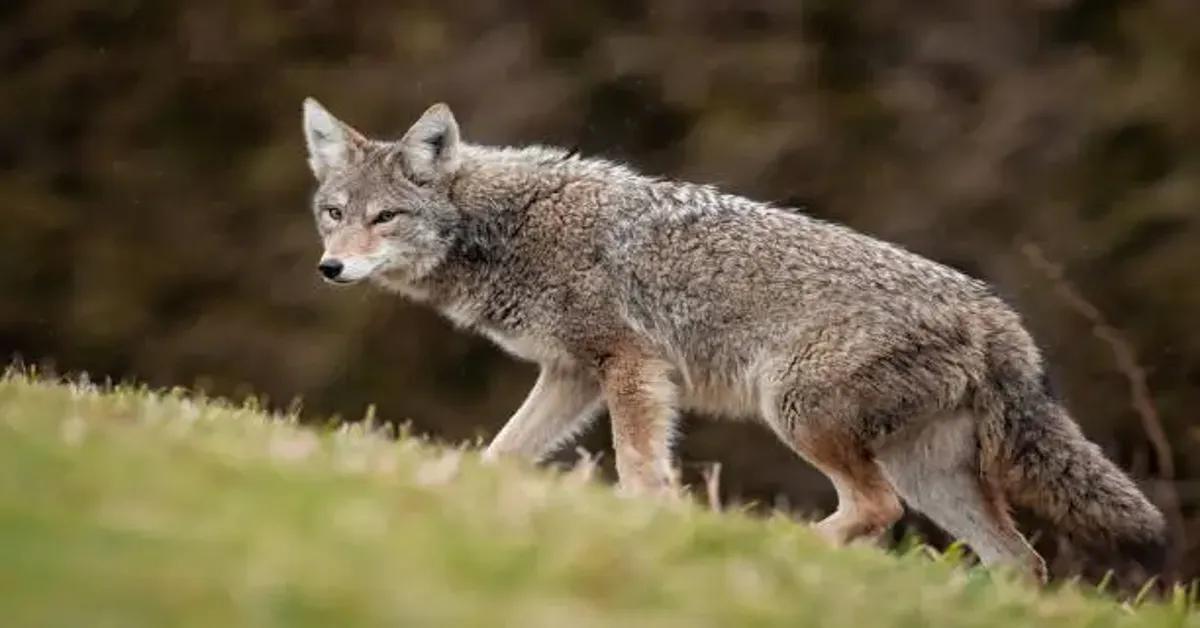If you’ve spotted a strange, twisted pile on your lawn or along a trail, you might be asking yourself, “Is this coyote poop?” The answer matters more than you think. Coyote scat isn’t just an unsightly mess—it’s a window into the life of one of North America’s most adaptable predators. Understanding what it looks like, what it contains, and what it signals about the animals in your neighborhood can help you protect pets, manage your property, and appreciate the fascinating ecology at work right under your nose.
This guide takes you deep into the world of coyote poop—how to identify it, why coyotes use it for communication, what dangers it poses, and what steps you should take if you find it. You’ll also learn how coyotes’ diets change by season and what their scat reveals about the broader health of local ecosystems. By the end, you’ll know not only how to recognize coyote scat, but how to interpret it.
Why Pay Attention to Coyote Poop?
Most people notice coyote scat by accident. A walk through the park, a morning in the backyard, or even a quick hike can reveal droppings that don’t belong to the family dog. Coyotes, unlike many other wild animals, tend to leave their waste in visible places: the center of trails, on dirt roads, near property boundaries. This is not random. Coyotes use scat to mark territory and communicate with other coyotes.
For homeowners and hikers, this behavior is a message too. It says: coyotes are present. Whether you live in a rural area, a suburban neighborhood, or even a city with nearby green spaces, the presence of coyote scat tells you the local food chain is alive and functioning. It also raises practical questions about safety and health.
How to Identify Coyote Poop
So what does coyote poop look like? At first glance, it may resemble dog feces. However, a closer look reveals distinctive features:
Typical Characteristics
- Shape and Size: Cylindrical, about ¾ to 1½ inches in diameter, and 3 to 6 inches long. Ends often tapered.
- Texture: Twisted, sometimes segmented, often with a coarse surface.
- Contents: Fur, hair, small bones, seeds, fruit pits, and sometimes grass.
- Color: Varies with diet—dark when eating meat, lighter or gray when eating berries or vegetation.
Coyotes have an omnivorous diet, so their scat changes with the seasons. In spring and early summer, expect more fur and bones from rodents and rabbits. In fall, you’ll see seeds and fruit skins from berries and apples. In winter, when prey is scarcer, scat may contain hair and occasional plant material.
Table: Key Differences Between Coyote and Dog Poop
| Feature | Coyote Poop | Dog Poop |
|---|---|---|
| Location | Often on trails or property edges | Usually in yards or random spots |
| Shape | Twisted, tapered ends | Smooth, blunt ends |
| Contents | Fur, bones, seeds | Usually uniform, processed food |
| Size | 3–6 inches long | Varies by breed |
| Purpose | Territory marking | Elimination only |
Why Coyotes Leave Scat in Visible Places
Coyotes are territorial animals. Their scat is a signpost, a boundary marker, and sometimes even a message of dominance. Droppings on paths, trailheads, or lawns are essentially coyote billboards. Other coyotes read these signs for cues about who lives where and what they’re eating. It reduces direct conflict by allowing individuals to avoid occupied areas.
This is why removing scat can sometimes make a property more appealing to coyotes—they think the territory is open. Conversely, leaving it sends an ongoing signal that another predator (or at least a perceived one) is present.
What Does Coyote Scat Tell Us About Their Diet?
Coyotes are opportunistic eaters. Their diet shifts depending on availability, which means their scat is like a seasonal diary.
- Spring: Mostly small mammals like rabbits, voles, and mice. Scat often packed with fur and small bone fragments.
- Summer: Mix of mammals and insects, occasional bird remains. Some grass for digestion.
- Fall: Heavy on berries, apples, persimmons. Seeds visible in scat.
- Winter: Mammals dominate, especially rodents and carrion. Scat may also contain human food scraps in urban areas.
Health Risks Linked to Coyote Poop
While the ecological role of coyotes is fascinating, their scat can pose health hazards. Here’s why you should avoid handling it with bare hands:
- Parasites: Coyote feces can contain roundworm eggs, hookworms, and tapeworm segments.
- Giardia and Other Pathogens: Contact with scat can spread diseases to pets and sometimes humans.
- Fecal-to-Oral Transmission Risk: If microscopic eggs or pathogens transfer to your hands and then to your mouth, infection can occur.
Important Note: If you must remove coyote scat, wear disposable gloves and a mask. Seal the waste in a plastic bag and wash your hands thoroughly afterward.
Signs Coyotes Are Active on Your Property
Finding scat is one sign, but coyotes leave other clues:
- Tracks with oval-shaped pads and claw marks.
- Yips or howls at night, especially during mating season (January to March).
- Torn trash bags, missing outdoor pet food, or garden damage.
- Dead rodents or small animals near your home.
If you find scat consistently, it may indicate a well-used coyote travel route or even a den nearby.
Why Are Coyotes in Urban Areas?
Coyotes have adapted astonishingly well to urban and suburban environments. They thrive on food scraps, small pets, rodents, and even fallen fruit in backyards. Scat in neighborhoods often contains evidence of this diet shift: pizza crusts, plastic wrappers, or ornamental berries.
As their natural range expands, sightings in cities like Chicago, Los Angeles, and New York have become common. Managing coyote presence requires education and habitat management, not panic.
Safe Removal of Coyote Scat
If you choose to remove scat from your property, follow these steps:
- Gear Up: Gloves, mask, and plastic bags.
- Pick Up: Use a shovel or scoop. Avoid direct contact.
- Dispose Safely: Double-bag the waste and place it in a secure trash bin.
- Sanitize Area: Wash tools with a bleach solution (1:32 ratio) and rinse with water.
- Wash Hands Thoroughly: Even if gloves were worn.
Can You Use Scat to Deter Coyotes?
Interestingly, leaving coyote scat in place might discourage other coyotes from settling nearby. However, this also means encouraging the presence of one coyote family. If your goal is complete removal, simply leaving scat isn’t effective. Instead, pair cleanup with deterrent strategies: secure trash, eliminate food sources, and install motion-activated lights.
Coyote Scat and the Bigger Picture: An Ecological Insight
Coyotes play an essential role in controlling rodent populations and maintaining balance in ecosystems. Their scat provides data for wildlife biologists tracking diet changes, disease prevalence, and habitat use. In fact, scat analysis is one of the most reliable non-invasive methods for studying wild canids.
By examining contents under a microscope, researchers can identify prey species, determine seasonal diet shifts, and even detect the presence of human food waste in urban diets. So, that unpleasant pile on your property is a valuable research tool.
Quick Identification Chart for Common Scat Types
| Animal | Scat Features |
|---|---|
| Coyote | Twisted, with fur/bones, 3–6 inches long |
| Fox | Smaller (2–4 inches), often with berries |
| Raccoon | Chunky, often near water, contains seeds |
| Domestic Dog | Smooth, uniform, lacks wild food remains |
Final Thoughts
Coyote poop may not be the most glamorous subject, but understanding it offers practical and ecological benefits. It tells us where these adaptable predators live, what they eat, and how they interact with our shared environment. By recognizing and respecting the signs, homeowners, hikers, and wildlife enthusiasts can coexist safely and responsibly with one of nature’s most resourceful species.
FAQs
1. What does coyote poop look like and how can you tell it apart from dog feces?
Coyote poop is usually cylindrical, twisted, and ¾–1½ inches thick with tapered ends. Unlike dog feces, it often contains fur, bones, seeds, and plant matter, reflecting their wild diet. Dogs typically produce smooth, uniform waste due to processed food. Scat left on prominent paths or trail centers is another coyote marker, as dogs rarely choose such strategic spots.
2. Is coyote poop dangerous to humans or pets?
Yes, coyote feces can carry parasites like roundworms, tapeworms, and pathogens such as Giardia, which can infect pets and, in rare cases, humans. Transmission typically occurs through ingestion of microscopic eggs after handling contaminated soil or waste. Always wear gloves, use a mask when cleaning, and disinfect the area to prevent accidental exposure.
3. Why do coyotes leave their scat in visible places like trails or lawns?
Coyotes use scat for territorial marking and communication. Droppings on paths, property boundaries, or elevated spots act as “signposts,” informing other coyotes about territory ownership and the individual’s diet. This behavior reduces physical conflicts among coyotes but can signal increased activity near homes, especially if seen repeatedly.
4. What does coyote poop reveal about their diet and behavior?
Coyote scat provides insights into their seasonal diet and adaptability. In spring and winter, expect fur and bones from rodents and rabbits; in summer, insect remnants; in fall, seeds and berry skins. In urban settings, coyote scat might contain food wrappers, fruit pits, or even pet food remnants, showing how these predators exploit human environments.
5. How should I safely remove coyote scat from my property?
Wear disposable gloves and a mask, and use a shovel or scoop to collect the scat. Double-bag it in sealed plastic and discard it in a secure trash container. Afterward, sanitize tools with a bleach solution (1:32 ratio) and wash your hands thoroughly. Avoid using bare hands or leaving scat exposed, as parasites can linger in the soil.











